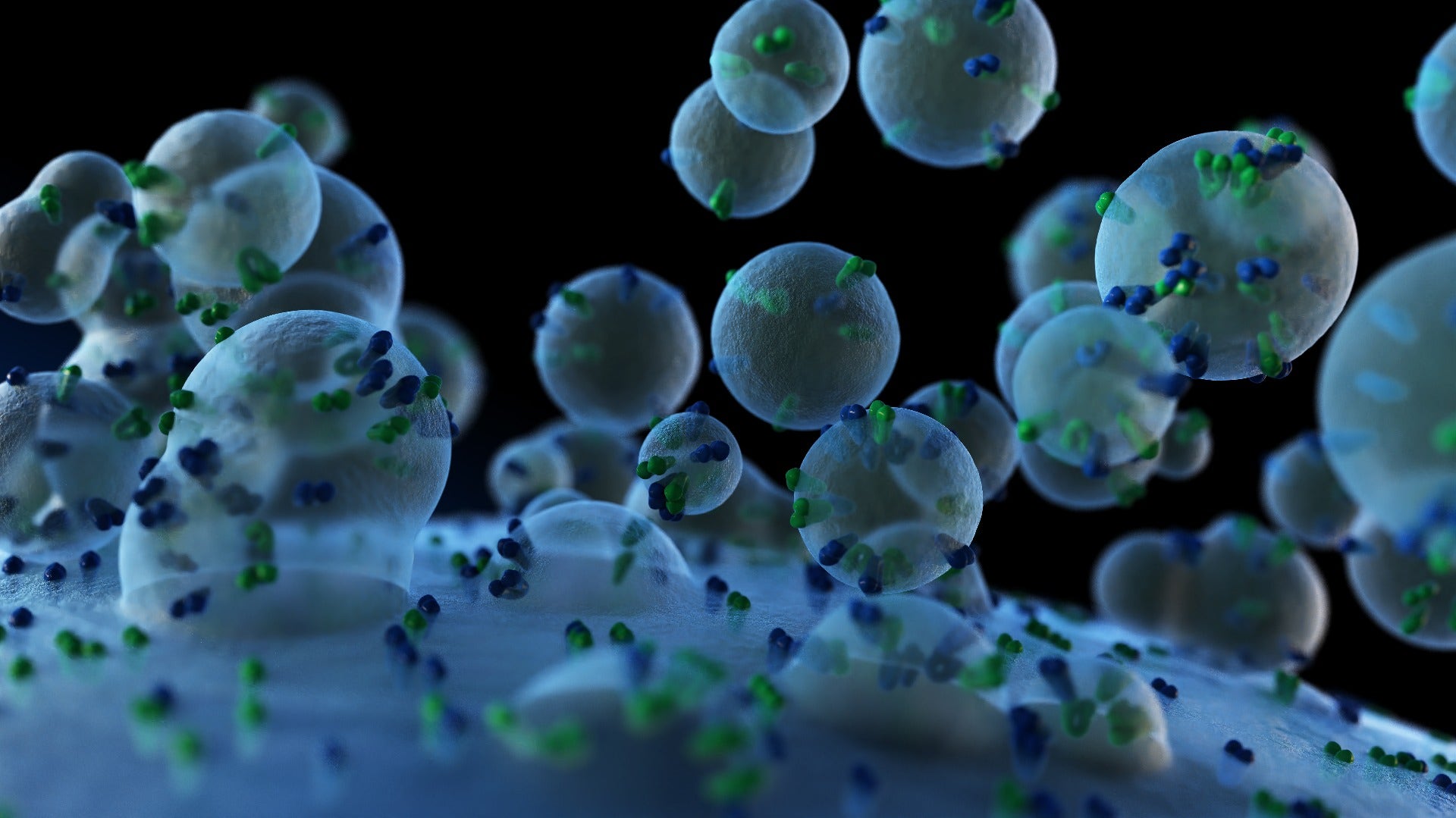Benefits of Enzyme-Mediated Extracellular Vesicle Engineering
Extracellular vesicles (EVs) are cell-derived membranous particles that transfer proteins and nucleic acids to mediate intercellular communication. In recent years, they have been exploited as tools for drug delivery, largely due to their innate biocompatibility – not only are EVs readily able to bypass cellular barriers, but they are also stable during circulation. One way of directing EVs to specific cell types is by attaching targeting ligands to their surface. However, current methods for EV engineering are laborious and/or inefficient, highlighting the need for an alternative approach. An article published by Pham et al in the Journal of Extracellular Vesicles describes the use of protein ligases for covalently conjugating targeting ligands to EVs, and reports that this method has been effective in delivering therapeutic molecules to cancer cells.

Enzyme-mediated surface functionalization of EVs offers many advantages
To date, one of the most common methods for producing EVs that target a specific cell type involves expressing the targeting ligand (typically fused to an EV membrane protein such as Lamb2b or CD63) in EV-donor cells, and scaling the EVs up for purification. This is both time-consuming and costly, as it necessitates multiple steps: cloning, transfection or viral transduction, selection, large-scale cell culture, and EV purification. An alternative is to isolate EVs before coat them with the targeting ligand using chemical or affinity-based methods. The harshness of chemical treatments however can lead to loss of function, while affinity binding is often transient and unstable.
Enzyme-mediated surface functionalization of EVs offers several important benefits. Not only does it shorten timelines by eliminating the need for viral transduction and cell proliferation, but it also protects the EVs by employing mild reaction conditions, typically at neutral pH. Additionally, enzyme- mediated surface functionalization is reproducible and controllable, and it can generate stable, covalently-modified EVs at scale. For these reasons, it promises to become a preferred approach for cell-specific delivery of therapeutic payloads.
Proven utility in targeting cancer cells
After identifying human red blood cell EVs (RBCEVs) as promising candidates for drug delivery, Pham et al. chose to conjugate these to either a selection of biotinylated peptides each containing a known EGFR targeting site, or to an anti-EGFR nanobody. The conjugation reaction was catalyzed by the protein ligases Sortase A or OaAEP1 ligase, with transmission electron microscopy (TEM) analysis of peptide-coated and uncoated RBCEVs showing the ligation to have had little effect on EV structure or integrity.
Following detailed characterization, which included the finding that Sortase A was more efficient at introducing peptides to the EV surface compared to OaAEP1 ligase, both unmodified and surface- modified RBCEVs were loaded with mRNAs (including TriLink’s CleanCap® FLuc mRNA) or chemotherapeutic drugs (including Paclitaxel). They were then used to treat cells grown in culture, in order to compare their effects on cellular behavior.
Enzyme-mediated surface functionalization of EVs enhanced delivery to target cell types. For example, using α-EGFR-VHH-RBCEVs to deliver luciferase mRNA to H358 cells resulted in 100% higher luciferase activity compared to uncoated RBCEVs. Surface functionalized RBCEVs also appeared to enhance the efficacy of low dose Paclitaxel on EGFR-positive cancer cells, a discovery that may ultimately equate to lower dosing with fewer harmful side effects.
Featured product:: CleanCap® FLuc mRNA
Article Reference: J Extracell Vesicles. 2021 Feb;10(4):e12057. doi: 10.1002/jev2.12057. Epub 2021 Feb 16.


